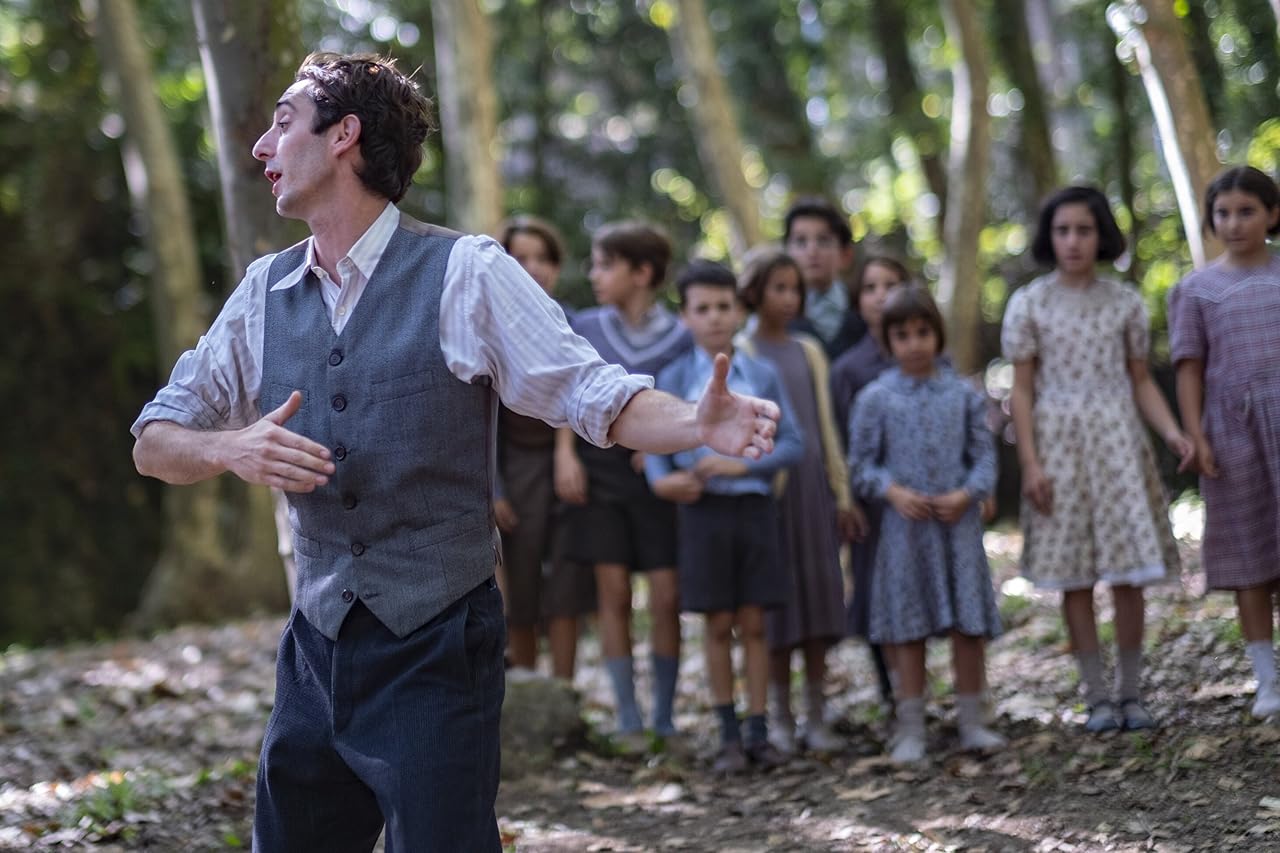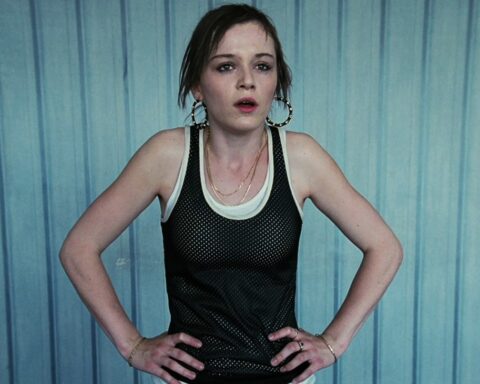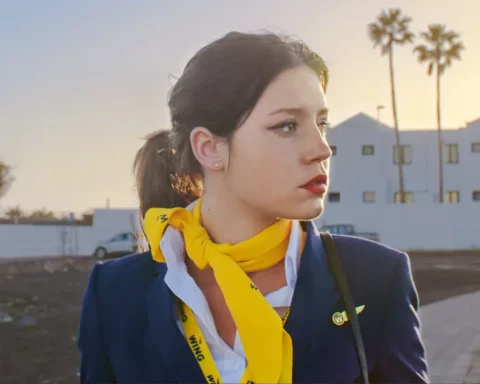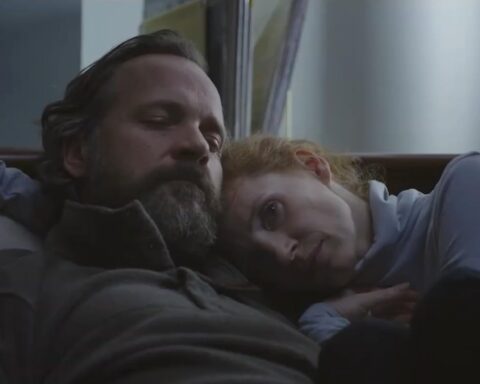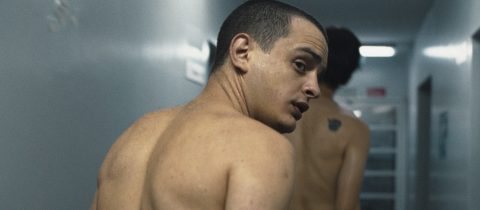The Teacher Who Promised the Sea (2023)
“I didn’t do it. You did.”
During World War II, in Nazi-occupied Paris, Picasso was once questioned in his home by a Nazi officer. Referring to the painting Guernica (1937), the officer asked, “Did you do this?” Picasso replied plainly: “No, you did.”
The entire scene of Guernica takes place in a single room.
On the left, a wide-eyed bull rises above a woman crying over her dead child.
In the center, a horse stabbed with a spear collapses in agony—its nose and upper teeth resemble a human skull.
Beneath it lies a dismembered soldier holding a broken sword, from which flowers grow.
Above the horse, a naked light bulb shaped like an eye glows.
In the top right, a terrified woman holding a burning oil lamp peers through a window.
Another woman stumbles in from the right, looking blankly at the light.
The bull, the horse, and the weeping mother all scream with dagger-shaped tongues.
On the far right, a man with raised arms is engulfed in flames from above and below.
The painting ends with a black wall and an open door on the right edge.
El maestro que prometió el mar is a cinematic reflection of this painting. But before discussing the film, we must delve into a story unfamiliar to many younger generations. What the film portrays is one of countless painful incidents that occurred in Spain—and indeed, around the world. Stories like this are most often encountered in Latin America, but tragically, similar events have unfolded in many other countries, including Turkey. Those responsible for the atrocities shown in such films have often been portrayed as “heroes who defended the nation against communism” in their own countries. This only proves how history is often written by the victors. Therefore, my advice to young people is: never blindly believe anything—not even what’s written in official history books. Always research, question, and think critically.
Now, back to the film. The story takes place in 1930s Spain. It is based on the true story recounted in Francesc Escribano’s book El mestre que va prometre el mar. The protagonist, Antonio Benaiges, like the author, is of Catalan origin—he comes from Catalonia, the region that includes Barcelona. This detail matters, as Catalonia has historically been a region with more progressive and left-leaning ideals.
1930s Spain—like much of Europe at the time—was politically volatile. Socialist thought was gaining ground, while conservative movements backed by the wealthy classes and the bourgeoisie had begun to take to the streets with armed force. In the most recent elections, the Republicans had come to power. However, the military, clergy, and much of the bourgeoisie were disturbed by this outcome. The film focuses on the events unfolding during this tense period.
The story is set in 1935, in the small village of Bañuelos de Bureba, in the Burgos region. A young teacher named Antonio arrives from Tarragona (a small city in southern Catalonia) to work at the local school. He is an idealistic and innovative educator. As soon as he steps into the school’s single-room building, he removes the cross from the wall. When the children say, “The cross fell,” Antonio replies, “No, it didn’t fall. I took it down. This is a school, not a church.” He stands firm on this principle and later tells the village priest that education must remain secular, while religion belongs in the church.
When one student drops his stationery out of fear, he covers his face. Antonio asks why, and the child says, “I thought you were going to hit me.” Antonio responds: “This is a school. No one will hit you here.” The mayor’s daughter adds, “My father says lazy kids only learn through beatings.” Antonio explains to the children that there is no place for violence in education—they will learn through music, dance, and love.
It takes time for the townspeople to get used to Antonio and his methods. But gradually, he earns their respect. His greatest support comes from Charo, who helps with the housework. Still, there are opponents, like the village priest. When the priest files a complaint, the inspector sent to the school finds no issue.
Antonio takes in Carlos, the son of a friend imprisoned for political reasons. At first withdrawn, Carlos slowly opens up under Antonio’s warm guidance and comes to see him as a father figure. Charo, aware of the growing political dangers in the region, warns Antonio. But he insists on staying. Once the region is taken over by the fascist Falangists, Antonio is handed over to the army. He is tortured severely. Later, unable to stand, he is dragged to the village square. The priest and the mayor declare him a traitor. Then all the notebooks and books he made with the children are burned in front of him. Finally, Antonio is loaded onto a truck and executed in the countryside.
This is a moment that echoes Hannah Arendt’s concept of “the banality of evil.” While Antonio is tortured in the village square—under the eyes of those he once taught—the families of his students, the mothers and fathers, stand silently. Some cover their children’s eyes; others just watch. No one intervenes. As Arendt wrote, evil is often not radical but shallow; it grows with the silent complicity of ordinary people who choose to obey and conform. In this scene, the town’s silence and passivity implicate them in the crime.
The story begins in 2010, with the discovery of a mass grave in the Burgos region. As the remains are identified, the film brings to light just one of many such cases. The Spanish Civil War is a rarely discussed but historically vital conflict. With the rise of the industrial revolution, socialist ideas and the working class had begun to challenge the status quo across Europe. The ruling elites, unwilling to relinquish power, tried to suppress these movements under the guise of nationalism and anti-communism. While the Nazis rose in Germany and the fascists took power in Italy, Spanish fascists under General Franco launched an uprising against the democratically elected Republican government. Franco, known for quelling a rebellion in Morocco, started the war with military support. Volunteers—intellectuals, artists, and workers—from across Europe came to fight for the Republic. But the war was lost. With help from Nazi Germany and fascist Italy, Franco emerged victorious and ruled Spain as a dictator until his death in 1975. Western Allies, despite claiming to fight fascism, did nothing to intervene in Franco’s regime. This reveals that their true motivation wasn’t democracy or human rights, but strategic interest.
Many renowned figures fought in the Spanish Civil War on the Republican side, including Federico García Lorca, George Orwell, Arthur Koestler, André Malraux, John Dos Passos, Ernest Hemingway, Emma Goldman, Tristan Tzara, Ilya Ehrenburg, and Pablo Neruda. French writer André Malraux’s novel Man’s Hope (L’Espoir) remains one of the most powerful literary accounts of the conflict. Malraux himself served as a pilot for the Republicans.
“We fight for the indivisible unity of Spain.
We fight for the integrity of Spanish soil.
We fight for our country’s independence and our people’s right to self-determination.”
— Spanish Pavilion, 1937 Paris World Expo
By: Ruşen Ertan, Nil Birinci
Editor: Nil Birinci

